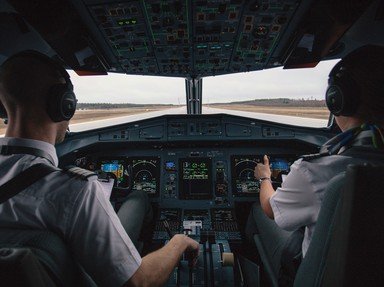Quiz Answer Key and Fun Facts
1. The world's first commercial jet-powered airliner took to the sky in 1949, just four years after the end of the Second World War. Which aircraft company designed and built this landmark aircraft?
2. What was the name given to the world's first commercial jet airliner?
3. The invention and development of the jet engine came to revolutionise commercial air travel. A gentleman with the first name of Frank is credited with inventing this simple, but very significant means of powering aircraft. What was his family name?
4. Design of the the first commercial jet airliner was under Ronald Bishop who had been responsible for the Mosquito, the famous WWII fighter bomber constructed of wood.
5. The design of the the first commercial jet airliner is still visually striking today. This mainly due to the positioning of the engines, which these days is not common in medium to large commercial airliners. What was different compared with today's airliners?
6. In May 1951 the airliner took off to embark on the world's first commercial jet flight with fare-paying passengers. It quickly became a success. What was its first destination?
7. After a positive beginning, a series of unexplained crashes took place. The aircraft appeared to have broken up in flight and this resulted in all aircraft in question being grounded for extensive testing in an attempt to discover what was happening. The testing involved the use of a very large water filled tank. Eventually, the problem was found: metal __________ .
8. It was found that the design of aircraft's oval windows were to blame for the disasters.
9. Which aircraft manufacturer gained a commercial advantage due to the loss of confidence after the crashes and subsequent grounding?
10. The unfortunate accidents ultimately benefited all passengers and aircraft manufacturers in terms of aircraft safety, but at a high price. The hard learned lessons contributed to the demise of a once thriving industry in a country that gave much to the world of aviation. However, the first commercial jet airliner is still flying today, but with what name?
Source: Author
keanet
This quiz was reviewed by FunTrivia editor
trident before going online.
Any errors found in FunTrivia content are routinely corrected through our feedback system.
